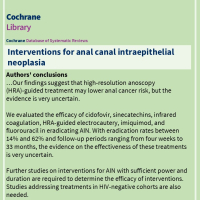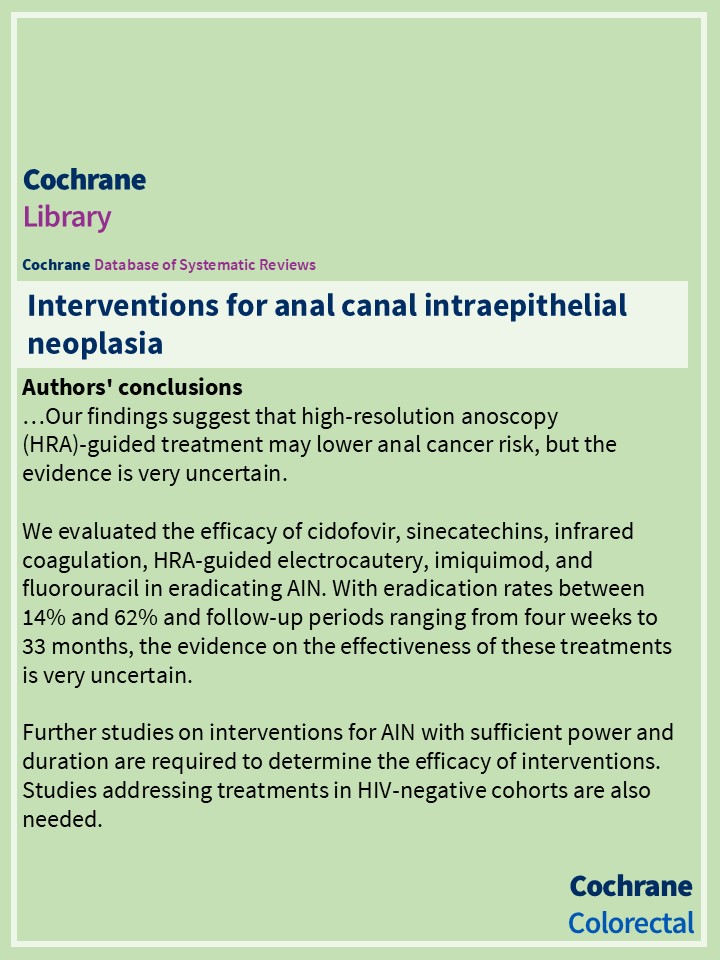
A Cochrane review has evaluated the effects of any therapeutic intervention for anal intraepithelial neoplasia, regardless of gender, age, and comorbidity.
Main results:
Five RCTs were included, randomizing a total of 4907 participants.
All included participants were adults living with HIV. The median age ranged from 45 to 51 years and most participants were male.
All studies had different interventions and outcomes, precluding meta‐analysis. Evidence for nine separate comparisons were synthesized.
- A study comparing high‐resolution anoscopy (HRA)‐guided treatment to active monitoring did not assess four of the review's outcomes of interest: AIN eradication, HPV eradication, histological downgrading of AIN lesions, and recurrence of AIN. Results for the three remaining outcomes – development of anal cancer, quality of life, and adverse events – are as follows.
- In the HRA‐guided treatment group, four per 1000 (0.4%) participants developed anal cancer, while in the active monitoring group, nine per 1000 (0.9%) participants developed anal cancer (CI) 0.20 to 0.93; P = 0.03; 1 study, 4446 participants; very low‐certainty evidence).
- Two per cent of participants in the treatment arm and 0.2% in the active monitoring arm reported adverse events. Most adverse events were mild pain (RR 10.7, 95% CI 3.85 to 29.79; P < 0.001; 1 study, 4446 participants; very low‐certainty evidence).
Authors’ conclusion:
All included studies focused on people living with HIV. This may limit the applicability of the results to HIV‐negative people. Certainty of evidence was assessed as very low for all outcomes across all nine comparisons, highlighting a lack of high‐quality evidence on interventions for AIN.
The findings suggest that HRA‐guided treatment may lower anal cancer risk, but the evidence is very uncertain.
The efficacy of cidofovir, sinecatechins, infrared coagulation, HRA‐guided electrocautery, imiquimod, and fluorouracil in eradicating AIN were evaluated. With eradication rates between 14% and 62% and follow‐up periods ranging from four weeks to 33 months, the evidence on the effectiveness of these treatments is very uncertain.
Further studies on interventions for AIN with sufficient power and duration are required to determine the efficacy of interventions. Studies addressing treatments in HIV‐negative cohorts are also needed.
Access the publication here: https://www.cochranelibrary.com/cdsr/doi/10.1002/14651858.CD009244.pub3/full

